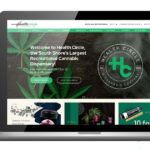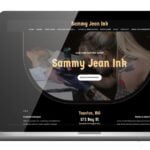As the old adage goes “the more things change, the more they stay the same.” It’s hard to find a better example of this than Business to Business sales, or B2B, for short.
While the landscape of sales has changed dramatically due to consumers’ virtually limitless access to information on the Internet, “leads” (potential buyers who have already shown interest in your product) and the ability to generate them consistently remain as indispensable as ever. So how are B2B sales conducted? And what are the best B2B lead generation strategies?
A Primer on Outbound vs. Inbound Marketing
In digital marketing, there exist two distinct yet equally vital approaches (cue the Law & Order graphics): outbound and inbound marketing.
Outbound encompasses any effort to introduce your product to a potential customer who hasn’t sought you out first. Cold calls, Television/Radio ads, and billboards are all prime (albeit decreasingly utilized) examples. Inbound, on the other hand, involves drawing customers to you without having to lift a finger: reeling in people who have already sought you out.
The effectiveness of inbound, both in terms of cost and results, far exceeds that of outbound. In fact, according to an article on Invespcro.com, inbound practices produce 54% more leads than traditional outbound practices, all while costing 61% less to execute.
OK, so if inbound is that much better, why does outbound still exist?
Well, inbound requires a lot of time before you’re able to reap any benefits. According to Neil Patel, a renowned business blogger whose sites have attracted millions of viewers, it takes about two years for inbound practices to generate significant results.
Therefore, successful B2B lead generation requires striking a healthy balance of outbound and inbound strategies, of knocking on your customer’s door while allowing them to come to yours on their own.
Outbound Strategies
Outbound Email Marketing
According to an article on PowerDigitalMarketing.com, at least 91% of consumers check their email inbox on a daily basis, making email the most frequently checked channel of communication in existence. It’s no wonder, then, that in the realm of B2B sales, the cold call has passed the torch to the cold email.
Cold emails present many of the same difficulties as cold calls, in that both entail starting a conversation with a potential client “out of thin air,” so to speak. Despite cold emails’ inherent challenges, however, they have a distinct advantage over their telephone counterparts, as emails offer a unique opportunity for creativity.
Warming Your Audience up to the Cold Email
While there’s very little you can say or do over the phone to grab, let alone maintain someone’s attention (the “whoops, I forgot to adjust my headset!” recorded line trick can only go so far), the visual nature of digital marketing lends itself to entertaining media like memes and GIFs.
And more importantly, emails are much more agreeable to not only personal touches that speak specifically to your target audience but also what’s known as a “Call to Action,” or “CTA,” an endnote that prompts potential buyers to express interest in the offer in some manner.
Popular CTA’s include asking the potential customer to:
- Simply reply to the email (the most popular CTA)
- Sign up for your company’s email newsletter
- Subscribe to your company’s blog
- Follow your company’s social media outlets
In Short, so much business is conducted via email these days that, if you persist in crafting (and, just as importantly, sending out) emails infused with fun visuals, humor, CTA’s, and personal touches specific to the potential buyer, the payoff could be extraordinary.
In fact, the aforementioned article on PowerDigitalMarketing.com claims that, because emails cost zero money to send, outbound email marketing can render a Return on Investment as high as 3800%!
Pay Per Click (PPC)
The strategy of Pay Per Click, or PPC, for short, essentially entails purchasing visitors to your company’s website by way of bidding on “keywords,” i.e. words that people type into search engines when seeking out information on the Internet.
For example, if you sell blue suede shoes and are willing to pay a search engine for the keywords “blue,” “suede,” and “shoes,” then the link to your website will be up near or even at the top of the results page, even above the Elvis song!
Google Ads
By far, the most popular form of PPC marketing is Google Ads, because, let’s face it: people nowadays only use Yahoo to check their fantasy football team, and no one’s asking Jeeves for much of anything anymore. Like Kleenex and Band-Aids, Google is so synonymous with conducting internet searches that the word “Google” has become a verb.
But PPC through Google Ads isn’t as simple as just writing Google a check and waiting for visitors to come. When the Google search engine takes that split second to decide who from the pool of paying advertisers will appear in that prime real estate at the top of the page, it takes into account not only how much money the advertiser spent, but also the advertiser’s “Quality Score,” which Google determines by assessing:
- The relevancy of the keywords the advertiser bid on
- The link’s “Click Through Rate” (i.e. the ratio of how many people using Google actually clicked on the link vs. how many people saw it but didn’t interact with it) and
- The overall quality of the advertiser’s “Landing Page” (i.e. wherever the link leads; most commonly the advertiser’s website)
In Short
If your company has the money to spend, doesn’t want to rest on the laurels of good ole’ Search Engine Optimization, and is confident in its website potential to keep internet searchers there once they’ve arrived, Google Ads is the best way to cut to the front of the endlessly long line and essentially guarantee you get seen.
Inbound Strategies
Content Marketing
Whoever said “content is king” sure hit the nail on the head. In digital marketing, there is truly no greater currency than interesting, memorable content for your potential buyers to view and ideally download. So when it comes to content, as Beyonce once sang, if you’ve got it, flaunt it!
Perhaps the most crucial factor in producing high-quality copy or videos is knowing your audience. All content should be created with the following questions in mind:
- Who, precisely, is my audience?
- Where does my audience’s job title? i.e. are they on the tech side of the operation or is their work more focused on their company’s bottom line?
- Where does my audience fall in their company’s chain of command? i.e. are they the higher-ups calling the shots? Or do they have superiors?
- What challenges do my potential audience face for which my product can provide a solution?
Understanding the Buyer’s Mindset
It’s equally important to understand the typical buyer’s mindset. Luckily, that’s one thing in B2B sales that has remained pretty consistent over time. Experts generally agree that buyers go through four stages:
- Recognizing that they have a problem or need
- Researching information on how best to solve that problem/need
- Considering all the solutions available, and
- Making a final decision
Obviously, there’s no exact science to how people browse websites; they do so at their own random disposal. But having content available that pertains to each stage of the buying process will increase your chances of providing a website visitor with just the right content at just the right time.
In Short
Being informed on your audience’s specific needs makes you much more capable of “speaking their language,” thereby greatly increasing your chances of converting website visitors to paying customers.
Viral Marketing Through Social Media
Do you have any friends or acquaintances that don’t have an account with either Facebook, Instagram or Twitter? Didn’t think so. Establishing a dynamic social media presence is critical to B2B lead generation because everyone is on it.
Social media provides many viable opportunities for outbound, such as paid advertisements on Instagram and Facebook (similar to PPC) or publishing articles on LinkedIn. But social media likewise provides tremendous opportunities for inbound marketing, most notably through “viral marketing,” the digital equivalent of “word of mouth” advertising.
The New “Word of Mouth”
Perhaps the most effective strategy in catalyzing a viral marketing campaign is to entice your customers to share your content on social media by offering them bonuses or special deals in exchange for spreading the word.
The benefits of this are two-fold: it establishes credibility with both your current customers, who appreciate the bonuses, and with the people they share your content with because someone aside from you is vouching for you.
In Short
Viral campaigns aren’t fueled solely by luck. Social media presents unprecedented opportunities to convince your followers to share your content, and in essence, they do the legwork for you. It doesn’t get any sweeter than free advertising!
Conclusion
Like anything worthwhile, effective B2B lead generation takes time, persistence, and in many cases, lots of money. But if your advertising campaign strikes a balance between outbound and inbound marketing strategies and displays a solid understanding of who your audience is and what type of content will grab and maintain their attention, there’s a great chance that the overall cost of B2B lead generation will pay for itself.
Sources:
“B2B Lead Generation: 11 Tips and Strategies for 2019” by Marcus Svensson on Kinsta.com https://kinsta.com/blog/b2b-lead-generation/#
“The Step by Step Guide to Crafting Content for Conversions” by The Single Grain Team on SingleGrain.com https://www.singlegrain.com/blog-posts/content-marketing/step-step-guide-crafting-content-conversions/
“What is Outbound Email?” by Kristin Crabb on PowerDigitalMarketing.com https://powerdigitalmarketing.com/blog/what-is-outbound-email/
“How Effective is Inbound Marketing? Statistics and Trends” by Khalid Saleh on InvespCRO.com https://www.invespcro.com/blog/how-effective-is-inbound-marketing/
The post B2B Lead Generation Strategies appeared first on Power Digital.
Article From: "Carly Biggs" Read full article
 SERPCOM is a full-service Boston digital marketing agency focused on improving online visibility, increasing traffic, raising revenue and providing SEO services.
SERPCOM is a full-service Boston digital marketing agency focused on improving online visibility, increasing traffic, raising revenue and providing SEO services.
SEO-first: A fundamentally better approach to online marketing.
Digital Marketing | SEO | Web Design & Development | Search Engine Marketing

SERPCOM is a full-service Boston digital marketing agency focused on improving online visibility, increasing traffic, raising revenue and providing SEO services. SEO-first: A fundamentally better approach to online marketing.
Digital Marketing | SEO | Web Design & Development | Search Engine Marketing
SERPCOM is a full-service Boston marketing agency focused on improving online visibility, increasing traffic, raising revenue and providing SEO services for leading brands.
Maximize the value of your website and turbo charge your online marketing efforts with SERPCOM. Call or click the button and start making the web work for you.
Just click on the Phone Number to dial on your phone:





